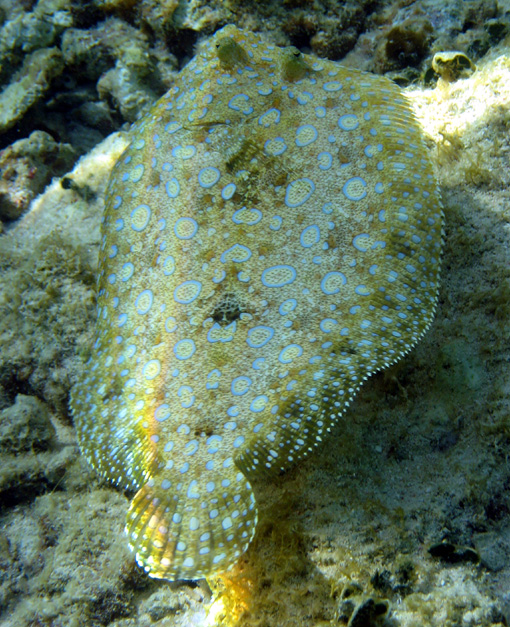The grey moray, Gymnothorax nubilus, is a moray eel of the genus Gymnothorax, found around the at depths down to 50 m, in reef areas of broken rock. Their length is between 40 and 100 cm.
The grey moray is an elongate scaleless fish with a large mouth full of prominent backward facing teeth, hinged so that they can fold back but lock when prey tries to struggle free. The dorsal fin is high and fleshy with a blue tinge along the edge. Its body colour is pale grey with faint darker markings.
The grey moray lives in rocky reef areas around offshore islands, spending most of its time with its head emerging from its cave or crevice, mouth agape. The open-mouthed stance is not aggression – morays need to continuously draw water through their small gills. They are active mostly at night but move about during the day more than yellow morays, often being seen entwined in kelp fronds. Their diet is made up of crabs, sea urchins, and small fish such as blennies and scorpionfish.








